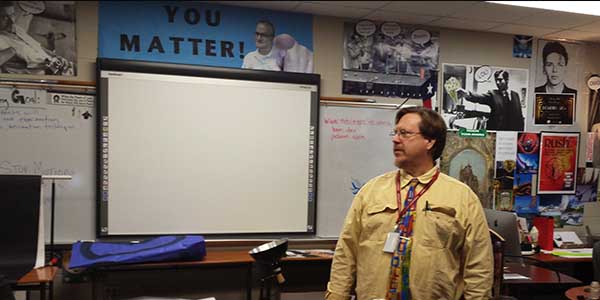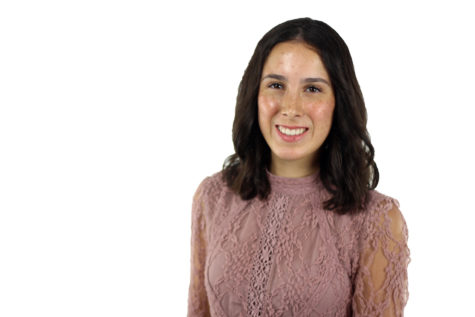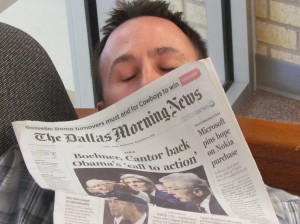A cost-saving measure: teachers become subs

Pre-calculus teacher Andrew Stallings, as an effort by the district to save money, substitutes a class period for digital-media teacher Ray Cooper.
February 5, 2015
Substitute teachers are a regular feature at school. But now other teachers are acting as subs when the need arises. As much as $80, the daily pay rate for a substitute, is saved when teachers covers anothers’ classes throughout the day.
“It was budget driven-financially, that was an area we knew we could save and what the state really requires teachers to have is, according to state law, teachers get a certain amount of time over the course of the week that they have to have for conference,” Principal Chris Mayfield said. “And what we do here is allow two conference periods and we double that time. We see conference time as great value, so when we ask a teacher to cover a class, we don’t want to take away their second conference period, which they can’t give up according to the state.”
Substituting for other teachers can be challenging as teachers often receive little notice when they have to cover another class.
“A lot of it depends on the behavior of the class, what they’re expectations are, if they want to learn. If they are cooperative, it’s quite easy,” geometry teacher Karyn Prince said. “If they are not interested in being there or have other stuff on their mind then it becomes significantly more difficult, especially with kids that you don’t know.”
However, there are times when substitutes are used instead of teachers.
“Really what helps drive [if a teacher has to sub or not] is the availability of substitutes. There are many days when we only need one, two, or three subs,” Mayfield said. “But we do have days like Fridays that are hard because there’s extracurricular activities like baseball or track or a soccer tournament, and sometimes those happen all at the same time. Then we have to utilize teachers, and we don’t do it every day. There’s a lot of days we don’t.”
Rhonda Lloyd, front office receptionist, creates the schedules for subs.
“Teachers, when they’re going to be out, have a computer program that they go into called ASAP, they put their absence in, and the subs go in on the other end and pick it up. Sometimes I’ll have to go in and help the process by calling a sub asking them if they want to take a job and adding them to that job,” Lloyd said. “So it can be done either of the two ways and then once the job is taken I have this, which I call the sub cheat sheet, so I put in what all classes and who’s subbing and then if they have off periods, I highlight them, and then like today I have three teachers that don’t have subs, because we’re kind of short on subs in our district and so like the teachers that don’t have subs when the teachers that do have subs have conferences, I’ll put those subs in for the other teachers.”
Lloyd also determines when teachers will be subbing for other teachers.
“If they don’t have a sub that can cover them then we also have every six weeks we do what we call a teacher sub list and so then I have teachers that in their off periods like maybe once every six weeks they have to cover for another teacher,” Lloyd said. “I kind of keep track and I try to only have a teacher cover another teacher’s class once a six weeks so I kind of keep track of it so I don’t feel like that they’re having to spend too much time on their conference periods. so, it’s just an everyday kind of puzzle to fit everything together.”
Having teachers as subs may be difficult at times, but it has more benefits than saving money for the school.
“We are just trying to be smart here and there, it helps the budget and keeps staff and continues to provide services for students. And, you get a certified teacher in the classroom. Nothing against substitutes, but clearly if you have someone in there who knows the students who, they may be able to do things in the class that someone who isn’t familiar with the high school or students can’t,” Mayfield said. “And it’s really great if we get like a science teacher subbing in for another science teacher or a math teacher covering for a math teacher. It helps instruction to keep going a little bit better, and that’s not a main reason but it is a side benefit.”




